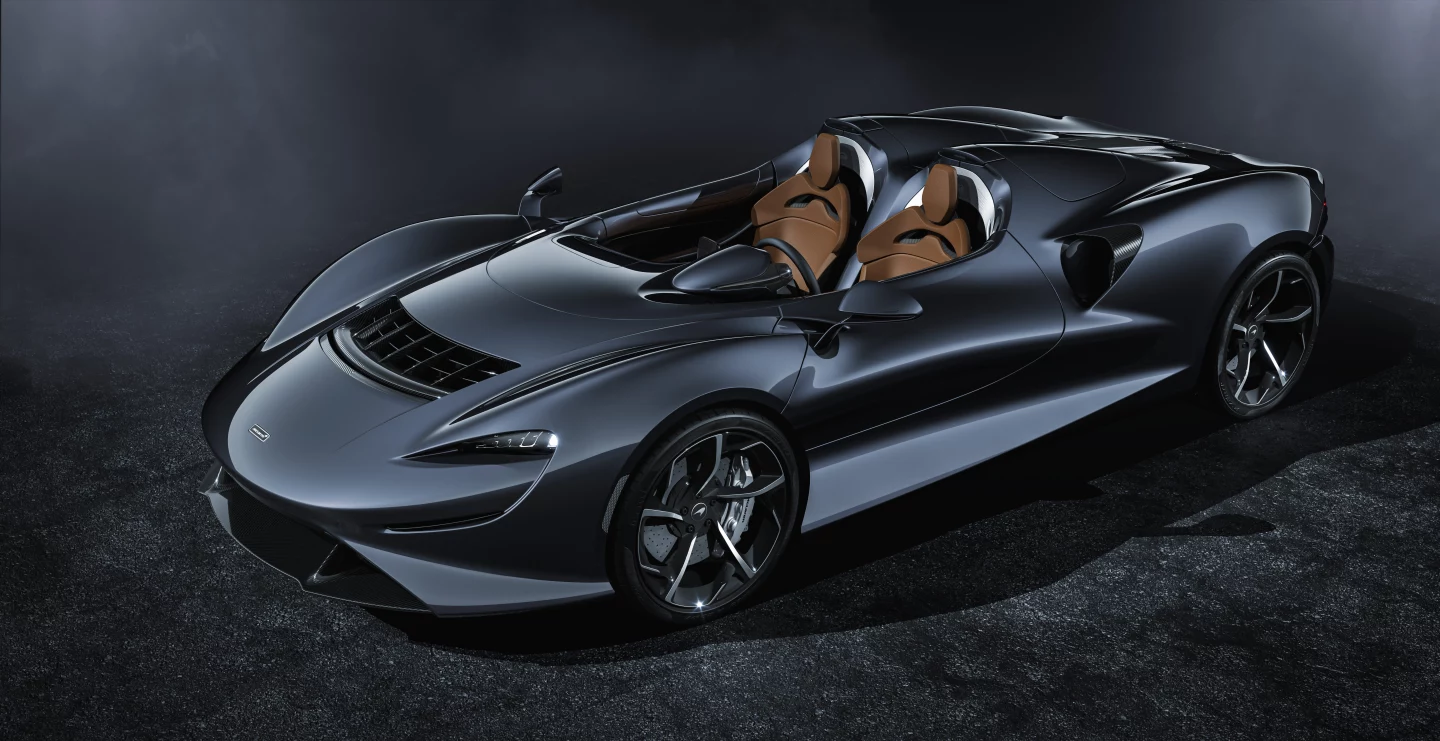McLaren has announced its new Elva roadster, an open-cockpit car in the tradition of Bruce McLaren’s sportscar racers from the 1960s. The vehicle has no glass, weighs less than any car the company has ever produced, and is quicker than the flagship Senna.
The Elva utilizes the 4.0-liter twin-turbocharged V8 found in the Senna, producing 815 PS (804 hp, 599.5 kW). McLaren says that the Elva runs from a standstill to 200 km/h (124 mph) in 6.7 seconds, as compared to the Senna's 6.8 seconds.
The car's aerodynamic design incorporates an Active Air Management System (AAMS) – pioneered at McLaren and debuting on the Elva – which uses moving air as a windscreen. The system channels air through the car’s nose and over the cockpit, utilizing an automatically-deployed deflector at the leading edge of the bonnet. This deflector, made of carbon fiber, pushes air into an inlet without stopping air from also flowing over the hood. These channels of air meet again at the top of the bonnet where the windscreen would usually be, creating a flow that goes up and over the car to make a roof made from the resulting airwall.

The Elva also features auto-deployed rollover buttresses, and the bodywork itself is a mixture of modern McLaren design and the 1960s forms that defined the McLaren-Elva racecars of the period. Inside, McLaren’s new “blurred boundaries” design makes up the cockpit. The dashboard flows into the doors, while the center stack moves without break into the carbon fiber center armrest.
The McLaren Elva will be made in 399 copies, with deliveries scheduled to begin in late 2020. McLaren Special Operations will customize each Elva to its owner upon order, and a fixed windscreen will be an option for those who prefer it. No roof or side windows will be offered, but the windowless Elva is fully homologated for most major world markets as a road car.
McLaren has not announced pricing or specifications, but promises to do so closer to the Elva’s launch.
Source: McLaren











